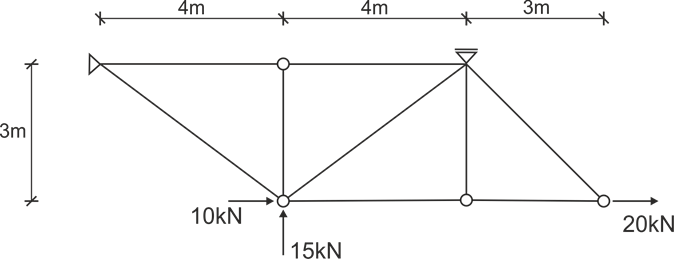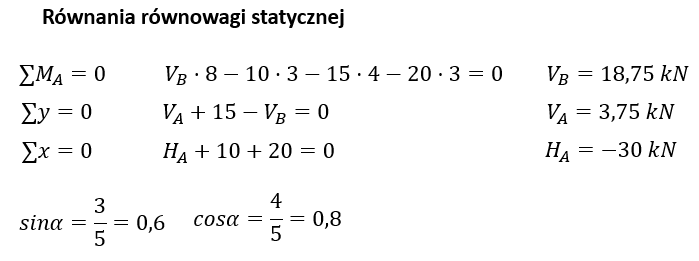Edupanda » Strength of Materials » Method of Nodes Equilibrium
Method of Nodes Equilibrium
In this text, you will learn more about the
Method of Nodes Equilibrium and find examples of solving truss problems using this method.
The Method of Nodes Equilibrium involves mentally cutting out individual nodes of a truss and writing the static equilibrium equations for each node - the sum of projections on the "x" and "y" axes. This allows us to calculate two unknown forces in the bars.
Therefore, when analyzing a truss using this method, we must start with a node that has at most two unknown forces (i.e., a node where only two bars are connected). Usually, there is one or two such nodes in a truss.
At the location of intersecting bars, we insert axial forces. They can be labeled, for example, "N" or "S" with the appropriate subscript to describe which bar the force is acting in.
Attention! Before we learn the method of nodes equilibrium, it is worth knowing the Zero Force Bars Theorems. If you are interested in the Ritter method, be sure to check it out here.
Now let's see it in practice - solving a truss problem using the Method of Nodes Equilibrium.
An example calculation with detailed commentary.
The Method of Nodes Equilibrium involves mentally cutting out individual nodes of a truss and writing the static equilibrium equations for each node - the sum of projections on the "x" and "y" axes. This allows us to calculate two unknown forces in the bars.
Therefore, when analyzing a truss using this method, we must start with a node that has at most two unknown forces (i.e., a node where only two bars are connected). Usually, there is one or two such nodes in a truss.
At the location of intersecting bars, we insert axial forces. They can be labeled, for example, "N" or "S" with the appropriate subscript to describe which bar the force is acting in.
Attention! Before we learn the method of nodes equilibrium, it is worth knowing the Zero Force Bars Theorems. If you are interested in the Ritter method, be sure to check it out here.
Now let's see it in practice - solving a truss problem using the Method of Nodes Equilibrium.
An example calculation with detailed commentary.
Example
Problem Statement
For a given truss, identify the zero force bars and determine the forces in all bars using the method of nodes equilibrium.

Solution
Step 1
Number the bars, optionally label the nodes, and mark the support reactions.
Step 2
Write the static equilibrium equations and solve for the support reactions.
Step 3
Determine the zero force bars.These will be bars 4 and 6 from the third zero force bars theorem, and bar number 7 from the second zero force bars theorem.
Step 4
Apply nodes equilibrium.We can start either from node A or from node (7-9).
Let's start with node A (1-3).

Write the static equilibrium equations for this node.
We can write the sum of projections on the "x" and "y" axes.
Similarly, perform cutting at node (3-4-5-8).

At this point, we have determined three bars as zero force at the beginning, and we have calculated four more from the equilibrium of two nodes, so we have 7 out of 9 bars accounted for. The remaining bars are bar number 9 and bar number 2.
From the second zero force bars theorem, an additional principle follows - if a force loads a node in such a way that its direction is collinear with one of the bars and no other force can be projected onto this line, then the force in the bar is also collinear.
Take a look at the image below, which presents a plot of normal forces.
We have this situation in the marked nodes shown in the drawing.

Plot of normal forces, notation:
